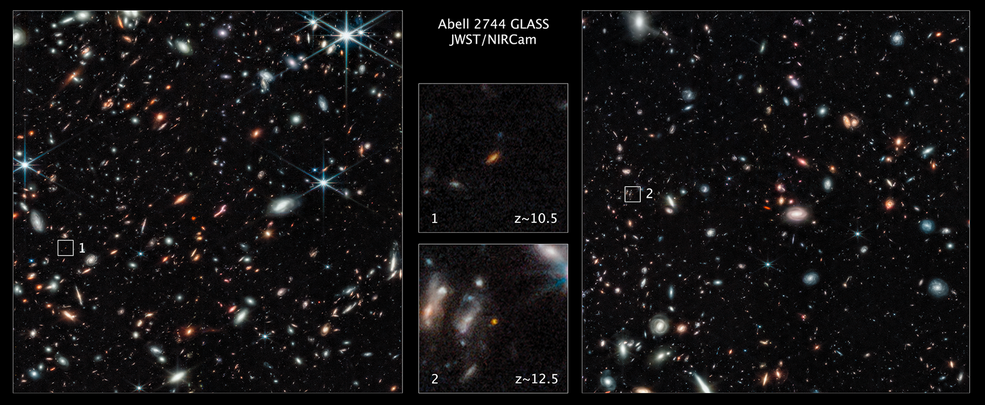James Webb researchers find two exceptionally bright early galaxies

Researchers, using NASA's James Webb Space Telescope (JWST), have found two of the exceptionally bright and farthest galaxies seen to date. These galaxies existed approximately 450 million and 350 million years after the big bang, respectively.
The previous record holder is a bright infant galaxy, named GN-z11, which existed just 400 million years after the Big Bang, which happened 13.8 billion years ago. It was identified by Hubble in 2016.
Follow-up spectroscopic observations with Webb will help confirm the distances to these distant yet exceptionally bright galaxies, and also reveal the rate of star formation and elemental abundances in the makeup of the early stars.
The research, led by Marco Castellano of the National Institute for Astrophysics in Rome, Italy, and Rohan Naidu of the Harvard-Smithsonian Center for Astrophysics and the Massachusetts Institute of Technology in Cambridge, Massachusetts, is described in two papers published in the Astrophysical Journal Letters.
"With Webb, we were amazed to find the most distant starlight that anyone had ever seen, just days after Webb released its first data," said Naidu of the more distant GLASS galaxy, referred to as GLASS-z12, which is believed to date back to 350 million years after the big bang.
"We've nailed something that is incredibly fascinating. These galaxies would have had to have started coming together maybe just 100 million years after the big bang. Nobody expected that the dark ages would have ended so early," Garth Illingworth of the University of California at Santa Cruz, a member of the Naidu team, said in a statement.
"This is a whole new chapter in astronomy."Webb researchers found 2 early galaxies, one of which may contain the most distant starlight ever seen. These 2 unexpectedly bright galaxies could fundamentally alter what we know about the very first stars: https://t.co/1MrIy1TAkL pic.twitter.com/TI1ZpFWJPG
— NASA Webb Telescope (@NASAWebb) November 17, 2022
JWST is an international program led by NASA with its partners, ESA (European Space Agency) and CSA (Canadian Space Agency). The premium space-based observatory is designed to solve mysteries in our solar system, look beyond to distant worlds around other stars, and probe the mysterious structures and origins of our universe and our place in it.










